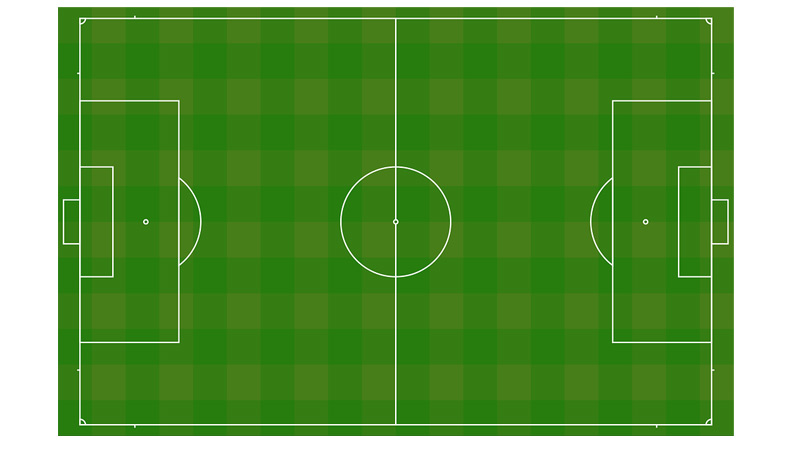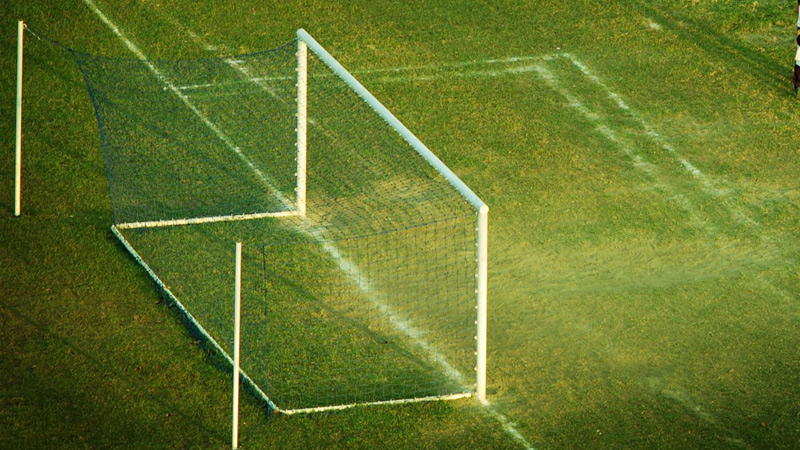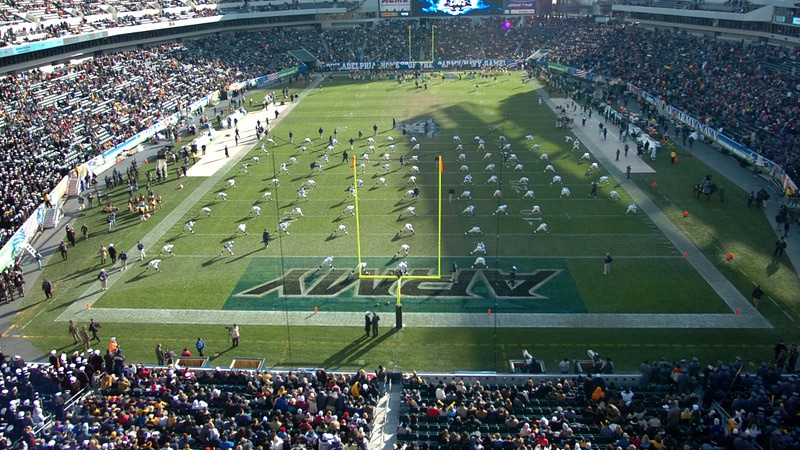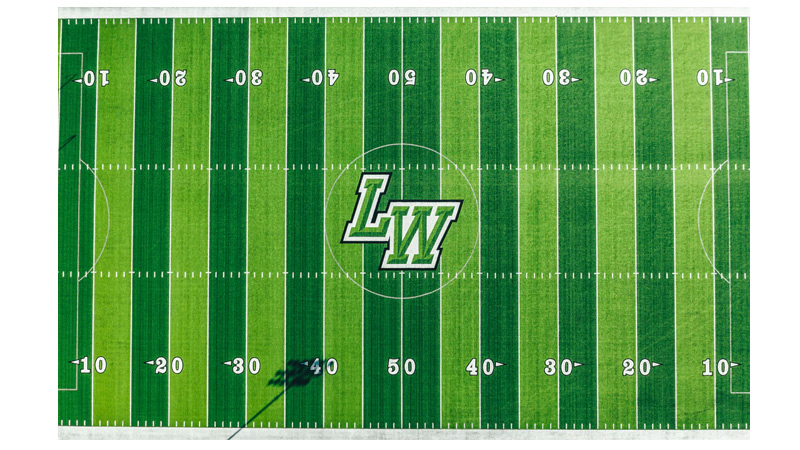Authority Soccer (authoritysoccer.com) is a participant in the Amazon Services LLC Associates Program, an affiliate advertising program designed to provide a means for sites to earn advertising fees by advertising and linking to Amazon.com. This site also participates in other affiliate programs and is compensated for referring traffic and business to them.
Soccer is commonly referred to as the most popular sport on the planet, but this news has yet to reach us in the US. There are many reasons for this, and one of them is the lack of information:
While entertaining to watch, soccer holds a few mysteries that not many fans are willing to dive into and find out more about.
These include rules, such as offside and seemingly boring technical data and requirements. However, once you get deep enough into the sport, no topic is boring and unnecessary.
As soccer fans, we commonly tend to disregard the technicalities behind the game.
While the rules of the game are something we can easily be acquainted with, comprehending and putting into perspective the size of the soccer field is what most American fans struggle with.
For this reason, we’ve decided to dedicate this article to comparing soccer field size to the size of a football field, which most Americans should be familiar with. Enjoy the reading!
Is a soccer field the same as a football field?
Soccer and American football are two entirely different games. While not having many things in common, one of the similarities between these two sports is the shape of the field of play.
This is probably why many soccer and football fans commonly wonder whether the two fields are the same and can be used interchangeably.
The short answer to both of these questions is no; a soccer field is not the same as a football field, and one of the fields can’t be used for both sports.
However, as mentioned previously, there are some similarities between the two. Let’s take a look at a few categories and find out what these fields have in common and what sets them apart:
Soccer and football field shape

Both soccer and football fields are rectangular, which means that their widths are shorter than their lengths.
Both of these dimensions can be variable in soccer as long as the shape of the field remains unchanged: The sideline, also called the touchline, always needs to be longer than the goal line.
The rectangular shape needs to be honored in football, but the dimensions can’t be changed from the prescribed ones.
IThistext will discuss the specific measurements of the soccer and football fields.
Soccer and football field surface
The surface of the field is another element that soccer and football have, in most cases, in common. Bo,th can be played on a natural or artificial surface.
When it comes to the fields in the US, football is more commonly played on artificial turf, while soccer is more commonly played on natural grass:
In football, it is common for teams to use artificial grass on their field. According to 2019 data, 12 NFL teams have artificial turf on their home fields, while 19 play on natural grass.
Regarding soccer, the teams are much more prone to using real grass: Just 6 MLS teams play on artificial turf, while 21 teams have natural grass on their home fields.
While both sports still prefer natural grass, it is obvious that the difference in artificial and natural turf use is much more prominent in the MLS.
Recent data also shows that the NFL is moving towards artificial turfs while the MLS is moving in the other direction.
Soccer and football field markings
Here’s one of the most obvious distinguishing characteristics of the field: If you’re ever confused about whether a field is meant for soccer or football, look at its markings.
In soccer and football, artificial and natural surfaces are green, while the markings on the field are white. As the two sports have entirely different principles of play, it’s no surprise that these markings differ.
The soccer field has the following markings:
- 2 Penalty Areas
- 2 Goal Areas
- A Penalty Spot
- 4 Corner Arcs
- A Halfway Line
- A Center Circle
- A Center Spot
The following markings distinguish the football field:
- 2 End Zones
- 10-Yard Intervals
- 5-Yard Lines
- 1-Yard Hash Marks
- 1-Yard-Long Scrimmage Line
- Numerals in Multiples of 10
As we can see from the field markings listed above, the only thing the soccer and football fields have in common in this term is the color of the markings.
The two sports have such a different set of markings that it would never be possible to use the fields interchangeably.
Soccer and football field goalposts

Goalposts are another element that soccer and football have in common. However, having goalposts is not enough to consider the fields similar, let alone the same.
This is especially true if we consider the difference between goalposts in these two sports. Here are their characteristics:
In soccer, goalposts need to be:
- Center-positioned at both of the goal lines.
- The crossbar is required to be 8 feet (2.44 meters) above ground and right over the goal line.
- The vertical posts that hold the crossbar must be 8 yards (7.32 meters) apart.
In football, goalposts need to be:
- Center-positioned at both of the goal lines.
- The crossbar must be 10 feet (3 meters) above ground but not over the end line.
- The vertical posts must extend over the crossbar, standing 18 feet 6 inches (5.6 meters) apart and 35 feet (10.7 meters) high.
The most significant difference in goalposts is where the ball should go; while football players aim to get the ball between the posts and above the crossbar, soccer players aim for space between the posts and below the crossbar.

Soccer field dimensions
There’s no better way to compare the two sports fields than to look at their dimensions. First up is soccer:
According to FIFA, the field of play in soccer needs to be at least 100 yards or 300 feet long. For our European friends, this translates to 90 meters.
A soccer field’s maximum length is 130 yards or 390 feet. This measurement translates to 120 meters.
The minimum width of the soccer field is 50 yards or 150 feet. Converted into European measurements, it can’t be narrower than 45 meters.
The maximum width is set at 100 yards or 300 feet. This measurement converts to 90 meters. As we’ve learned, the field’s width can’t exceed its length.
In international soccer matches, slightly different measurement rules apply:
The field must be at least 110 yards or 330 feet, or 110 meters, long. The maximum length of a soccer field for international matches is set at 120 yards or 360 feet. This translates to 110 meters.
The minimum width of a soccer field for international matches is 70 yards or 210 feet. The conversion to meters shows the number of 64. The maximum width of a soccer pitch for international matches is 80 yards, 240 feet, or 75 meters.
As the figures in this section of the text show, soccer field builders have a fairly wide range of options in terms of length and width.
The maximums are only chosen by those building to impress, while minimums are reserved for those looking to spend as little money as possible to have a FIFA-certified field.
Most new stadiums are built between those two measurements (more later).
Football field dimensions

After listing all soccer field dimensions, the time to learn more about football field measurements has arrived. Here are the main ones:
According to the NFL, the football game is played on a rectangular field that is 120 yards, or 360 feet long, and 53 1/3 yards, or 160 feet wide.
For our European readers, the dimensions of the football field are 110 meters in length and just under 50 meters in width.
Remember that all football fields come with a 10-yard end zone on each end of the field, meaning that the actual field of the play comes out to 100 yards or 300 feet.
While the length and width of a soccer field can be variable, there are no minimum and maximum dimensions that the teams and those building the fields can choose from in football; football fields have strict measurements that must be adhered to.
Which is longer, a soccer field or a football field?
Soccer fields are typically longer than football fields if we only consider the field of play or goal line-to-goal line measurements. Before explaining further, let’s take a look at a short table that compares the dimensions of these two fields:
| Soccer Field | Football Field | |
|---|---|---|
| Length | Minimum: 100 yards, Maximum: 130 yards | 100 yards between goal lines (120 yards including end zones) |
| Width | Minimum: 50 yards, Maximum: 100 yards | 53 1/3 yards (160 feet) |
As we can see from the table, and as we’ve learned from the previous two sections of this text, soccer fields can vary in length and width, while football fields need to meet specific dimension criteria.
While we can say that the minimum requirements for a soccer field nearly match those for a football field, we should also keep in mind that soccer fields are rarely built to meet the minimum requirements.
For example, in the English Premier League, a typical field is 115 yards long and 74 yards wide.
If we disregard the end zones, which add 10 yards to each side of the football field, soccer fields are longer.
Also, if we take the maximum length and width measurements that FIFA allows, we can conclude that a soccer field is longer than a football field.
However, things are more complicated in practice. As we mentioned before, a typical soccer field is rarely built to meet the maximum requirements but rather to the Premier League average. Therefore, a soccer field is no longer than a football field.
A complicated question with a complicated answer, the length of the field is a source of endless confusion among fans and endless discussion among connoisseurs of soccer and football.
It’s up to you to decide which measurements should be considered and take a stance. A soccer field is longer.
Is the MLS field smaller than FIFA?
This is another big question that has a semi-complicated answer. So far, we’ve mentioned several times that soccer fields, unlike those used for football, can have variable dimensions.
This means that most soccer fields in the world are built differently. Our earlier Premier League example shows that a typical European field is 115 yards long and 74 yards wide.
FIFA chooses this number as the optimum size. However, some fields in this league and in Europe in general can be increased or decreased by a few yards.
The situation is similar in the US. The MLS standards prescribe that a soccer field can’t be less than 110 yards in length and 70 yards in width.
The American soccer league has fields 10 yards longer and wider than the required minimum (120×80 yards), such as the Yankee Stadium in New York.
The only way to really compare the MLS and FIFA fields is to take a look at the average soccer field size: While both FIFA and the MLS have bigger and smaller fields under their jurisdiction, the average size of the field is the same, at 115 yards in length, and 74 yards in width.
This ensures that players worldwide play on the same pitch with little need for adjustment.
To answer the initial question, the typical MLS field is not smaller than a field built to FIFA specifications. If we consider FIFA’s international match dimension restrictions, FIFA and the MLS share requirements for field size. According to the FIFA rulebook, national leinto account games can be played on a smaller pitch than the MLS requires.
Can soccer be played on a football field?
According to everything we learned above, soccer and football fields have too many differences to be used interchangeably. However, this doesn’t stop most high schools across the US from using one field for both sports.
Due to a lack of funding, most US schools use their football fields for soccer. Considering the minimum requirements that FIFA set for a soccer field, we can see that a standard football field meets those requirements.
But does it mean that something can be done just because it should be?
Those with access to a field purpose-built for soccer should always opt to use it instead of a football field. While goals can be dragged on and double lines drawn onto the field, playing on a soccer-specific field offers more benefits.
Getting used to the size of the field, the feel of the surface, as well as the speed of the ball on the surface is something that can’t be replicated on a field that is built for an entirely different sport.
This is why playing soccer on a football field is only acceptable at an amateur level.
We know how popular football is than soccer is in the US. For this reason, not many schools and communities find it feasible to invest in building a soccer field.
Still, having any field to practice play on is better than having none, so until the popularity of soccer reaches the European levels, we’ll have to settle.

